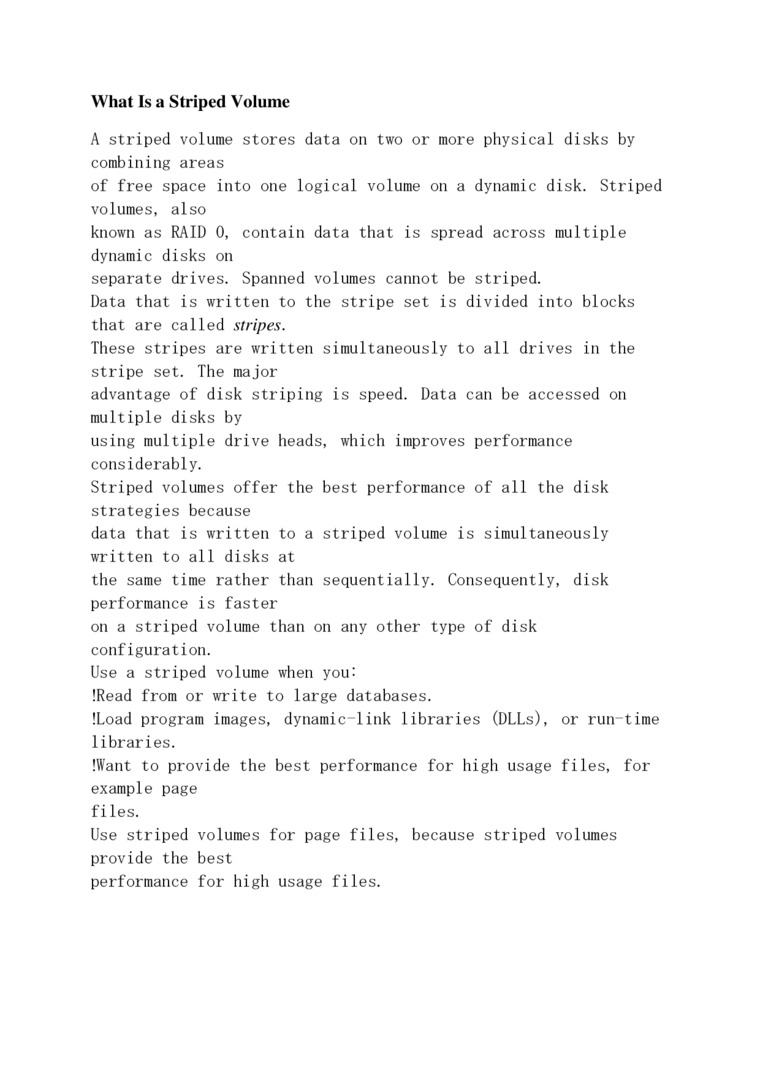67085

What Is a Striped Volume
A striped volume Stores data on two or morę physical disks by combining areas
of free space into one logical volume on a dynamie disk. Striped volumes, also
known as RAID 0, contain data that is spread across multiple dynamie disks on
separate drives. Spanned volumes cannot be striped.
Data that is written to the stripe set is divided into blocks that are called stripes.
These stripes are written simultaneously to ail drives in the stripe set. The major
advantage of disk striping is speed. Data can be accessed on multiple disks by
using multiple drive heads, which improves performance considerably.
Striped volumes offer the best performance of all the disk strategies because
data that is written to a striped volume is simultaneously written to all disks at
the same time rather than seąuentially. Conseąuently, disk performance is faster
on a striped volume than on any other type of disk configuration.
Use a striped volume when you:
!Read from or write to large databases.
!Load program images, dynamic-link libraries (DLLs), or run-time libraries.
!Want to provide the best performance for high usage files, for
example page
files.
Use striped volumes for page files, because striped volumes provide the best
performance for high usage files.
Wyszukiwarka
Podobne podstrony:
What Is a Simple Volume A simple volume is a single volume that resides on a dynamie disk. You can c
What Is a Spanned Volume A spanned volume is a simple volume that allows you to create a single logi
_Jednostki pojemności (Yolume measurements)_ what is its volume? - jaka jest jego/jej objętość 100 c
27ddg16 Drill_dn Setup 3 There is not enough free disk space on one or morę drives. Space Required
cqmpqunping One of the easiest ways of forming new words in putting two (or morę) old words together
What Is an Extended Yolume You can increase the size of an existing simple volume by extending the v
Big Data - ProblemsO Storage ■ volume ■ fast data access ■
0 HARDWIPE File Data Devices 3 Volumes■ Free Space » Recyders % PagefileHardwipe TOOLS
Foreword The present book is a subseąuent volume of monographic publications being the effect of cyc
Eurostat Graph tsieb020 Real GDP growth ratę - volume Perceritage change on previous yeargeo ■ 2013
What is Data Abstraction ■ Strong division between the interface and the
Grammar 9 TASK 4 What is the difference in meaning between (a) and (b) below? la My brother, who is
gram 2 I. The following noncount nouns can be converted into count nouns. What is O— ocSLA-w c> (
więcej podobnych podstron